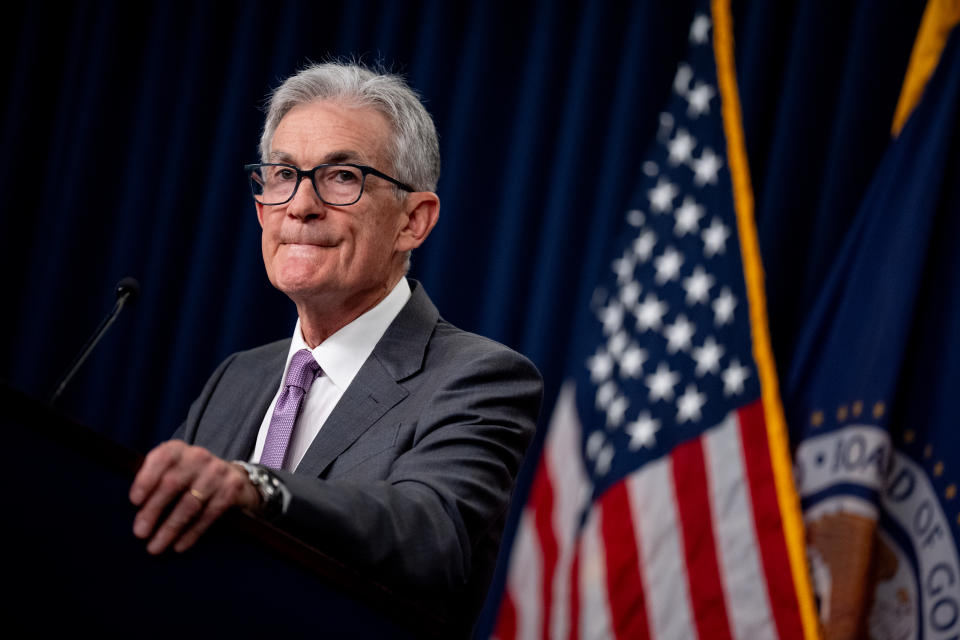

The Lesson to be Learned from Today’s Morning Briefing is: become a member plus your inbox every morning:
Stock markets ended last week under pressure.
They started this week in the same state.
As the closing bell rang on Wall Street on Monday, the Nasdaq (^IXIC) was down 3.4%, deepening losses after entering a correction last week.
The index S&P 500 (^GSPC) lost 3%, while the Dow (^DJI) fell 1,034 points.
This year’s stock market stars, the Magnificent Seven, lost an estimated $652 billion in market value on Monday alone.
The overnight carnage in Asian markets, which sent U.S. stock futures down as much as 6% in the early hours of Monday, has raised fresh concerns about the yen’s “carry trade” status.
The price of cryptocurrencies captured the breadth of the risk-off move in markets, with bitcoin (BTC-USD) and ether (ETH-USD) slumping to some of their biggest one-week losses since the FTX crash. And several U.S. online brokers appeared to be grappling with connectivity issues early Monday as investors rushed to check their portfolios — or perhaps get in and out of positions amid the early chaos.
Market commentators of all stripes were in full swing on Monday, some warning of panic about a return to prices seen just a few months ago. Others were betting on a football on a hyped AI trade that finally appeared to be cracking under the pressure.
Wall Street strategists have offered all sorts of explanations, from the unraveling of the aforementioned yen carry trade to Vice President Kamala Harris’ better poll numbers against Donald Trump to investors becoming too complacent in their focus on AI trading and low volatility. Even the news this weekend that Warren Buffett was reducing his stake in Apple has received some support as an explanation.
But there was one clear catalyst for last week’s market action: the Fed.


And that remains the clearest way to understand why the stock market’s smooth-sailing year came to an abrupt end. When the Fed held interest rates steady last week, investor reactions suggested the central bank made a policy mistake by not taking the chance to cut rates before there were signs of weakness in the economy.
Weak employment data in July raised concerns that the Fed would cut interest rates from a position of need as the labor market softens rapidly, rather than from a position of strength to bring inflation under control and not hurt the labor market.
At a news conference last week, Fed Chairman Jay Powell reiterated that the recent slowdown in hiring and rise in unemployment was a “normalization” of the labor market. Investors appear less convinced.
So with more than six weeks until the Fed’s next regular policy meeting, markets were quick to pressure the central bank not to miss its next meeting.
The conversation changed quickly one of both Fed to cut interest rates on September 18 How much The Fed should cut interest rates. (Current market expectation is 50 basis points.)
Some even suggested on Monday that the Fed could consider cutting interest rates between its scheduled meetings, a move last made in March 2020 during the pandemic.
A 15% drop in the Nasdaq would seem to bring less urgency, but one can never be too sure.


For the latest stock market news and in-depth analysis, including what’s moving stocks, click here
Read the latest financial and business news from Yahoo Finance